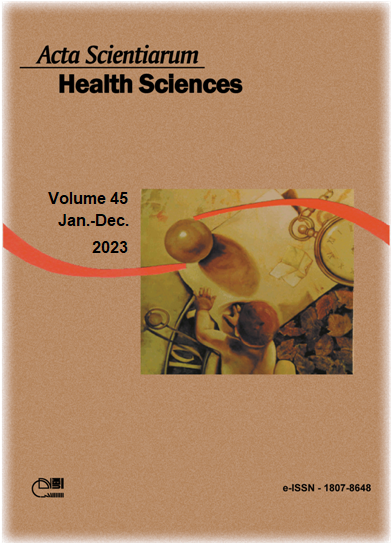HIV in Paraná: clinical-epidemiological overview, distribution, and incidence by macroregional and regional health
Abstract
Objective: to trace the clinical-epidemiological panorama, distribution, and incidence of HIV cases by macroregional and regional health of Paraná. Material and Methods: descriptive epidemiological study, carried out with data obtained by the Notifiable Diseases Information System regarding HIV/AIDS cases registered in the state of Paraná between 2018 and 2019. Data were analyzed by descriptive statistics. The study was authorized by the State Department of Health of Paraná and had a favorable opinion from the Research Ethics Committee. Results: 6,023 cases of HIV/AIDS were reported, with a prevalence of male, white, mean age of 35 years old, complete high school and college, and predominance of sexual transmission. The epidemiological characteristics corroborate the findings in the literature and are similar to the national profile. There were cases of mother-to-child vertical transmission during pregnancy and via transfusion, suggesting possibilities for effective action. East macroregional had the highest number of cases and incidence coefficient. Conclusion: the HIV/AIDS epidemic represents a multidimensional challenge for the health sector, considering its magnitude, severity, costs, and dissemination. Despite the improvement in infection prevention and health promotion strategies, the numbers of new infections per year are relevant and stable. The regionalization of information allows the individualization of epidemiological data, enabling the adoption of more effective strategies that correspond to local needs. Therefore, this study brings great contributions to local managers to direct strategies for assistance, surveillance, and control of this condition of great importance to public health.
Downloads
DECLARATION OF ORIGINALITY AND COPYRIGHTS
I Declare that current article is original and has not been submitted for publication, in part or in whole, to any other national or international journal.
The copyrights belong exclusively to the authors. Published content is licensed under Creative Commons Attribution 4.0 (CC BY 4.0) guidelines, which allows sharing (copy and distribution of the material in any medium or format) and adaptation (remix, transform, and build upon the material) for any purpose, even commercially, under the terms of attribution.
Read this link for further information on how to use CC BY 4.0 properly.























5.png)







